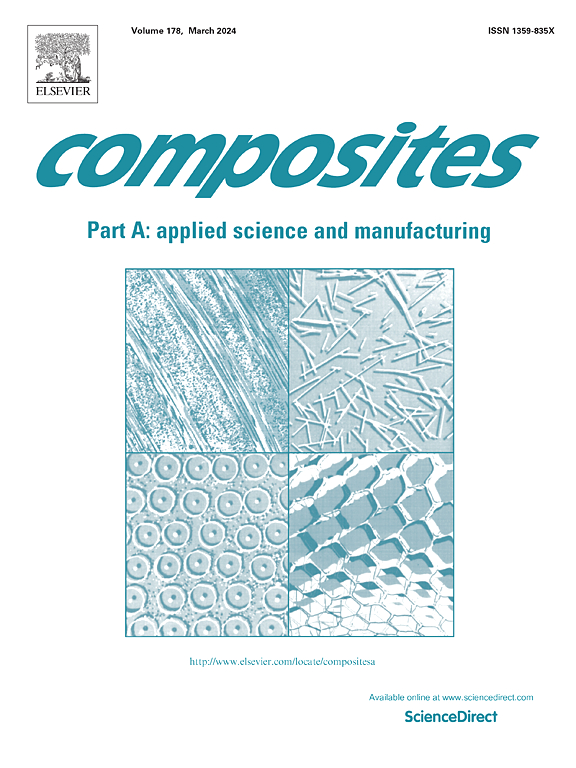Reducing the interfacial thermal resistance between liquid crystal epoxy and hexagonal boron nitride: An investigation from molecular dynamics simulations at the atomic level to macroscopic properties
IF 8.1
2区 材料科学
Q1 ENGINEERING, MANUFACTURING
Composites Part A: Applied Science and Manufacturing
Pub Date : 2025-02-01
DOI:10.1016/j.compositesa.2025.108766
引用次数: 0
Abstract
To gain a profound understanding of the interfacial heat transport mechanisms in hexagonal boron nitride (h-BN)/liquid crystal epoxy (LCE) composites, the theoretical simulation and experimental validation approaches are combined for clarifying the relationship between interfacial microstructure, interfacial thermal resistance (ITR) and macroscopic thermal conductivities of the h-BN/LCE composites. Molecular dynamics simulations (MD) show that LCE molecules can be closely packed on the h-BN surface to lower the ITR by 21 %∼42 %, in comparation to that of amorphous epoxy. Afterwards, the interfacial interactions between h-BN and LCE, and the interface phase thickness (2.305 nm) are experimentally confirmed. Meantime, the reduced ITR are examined to be 15 ∼ 65 % via laser flash method. The produced h-BN/linear LCE composites containing 95 wt% h-BN platelets exhibit excellent in-plane and through plane thermal conductivities up to 77.01 and 12.67 W m−1 K−1, which exceed 25.8 % and 55.8 % those of the amorphous epoxy composite. It proves that the mesogens adsorbed on h-BN surface provides a straightforward approach to reduce ITR and enhance thermal conductivities of resultant composites. Besides, non-covalent and covalent modifications of h-BN allow to further diminish the ITR and facilitate heat transfer. The outcomes are believed to promote the application of h-BN/LCE composites in thermal management materials.

求助全文
约1分钟内获得全文
求助全文
来源期刊

Composites Part A: Applied Science and Manufacturing
工程技术-材料科学:复合
CiteScore
15.20
自引率
5.70%
发文量
492
审稿时长
30 days
期刊介绍:
Composites Part A: Applied Science and Manufacturing is a comprehensive journal that publishes original research papers, review articles, case studies, short communications, and letters covering various aspects of composite materials science and technology. This includes fibrous and particulate reinforcements in polymeric, metallic, and ceramic matrices, as well as 'natural' composites like wood and biological materials. The journal addresses topics such as properties, design, and manufacture of reinforcing fibers and particles, novel architectures and concepts, multifunctional composites, advancements in fabrication and processing, manufacturing science, process modeling, experimental mechanics, microstructural characterization, interfaces, prediction and measurement of mechanical, physical, and chemical behavior, and performance in service. Additionally, articles on economic and commercial aspects, design, and case studies are welcomed. All submissions undergo rigorous peer review to ensure they contribute significantly and innovatively, maintaining high standards for content and presentation. The editorial team aims to expedite the review process for prompt publication.
 求助内容:
求助内容: 应助结果提醒方式:
应助结果提醒方式:


